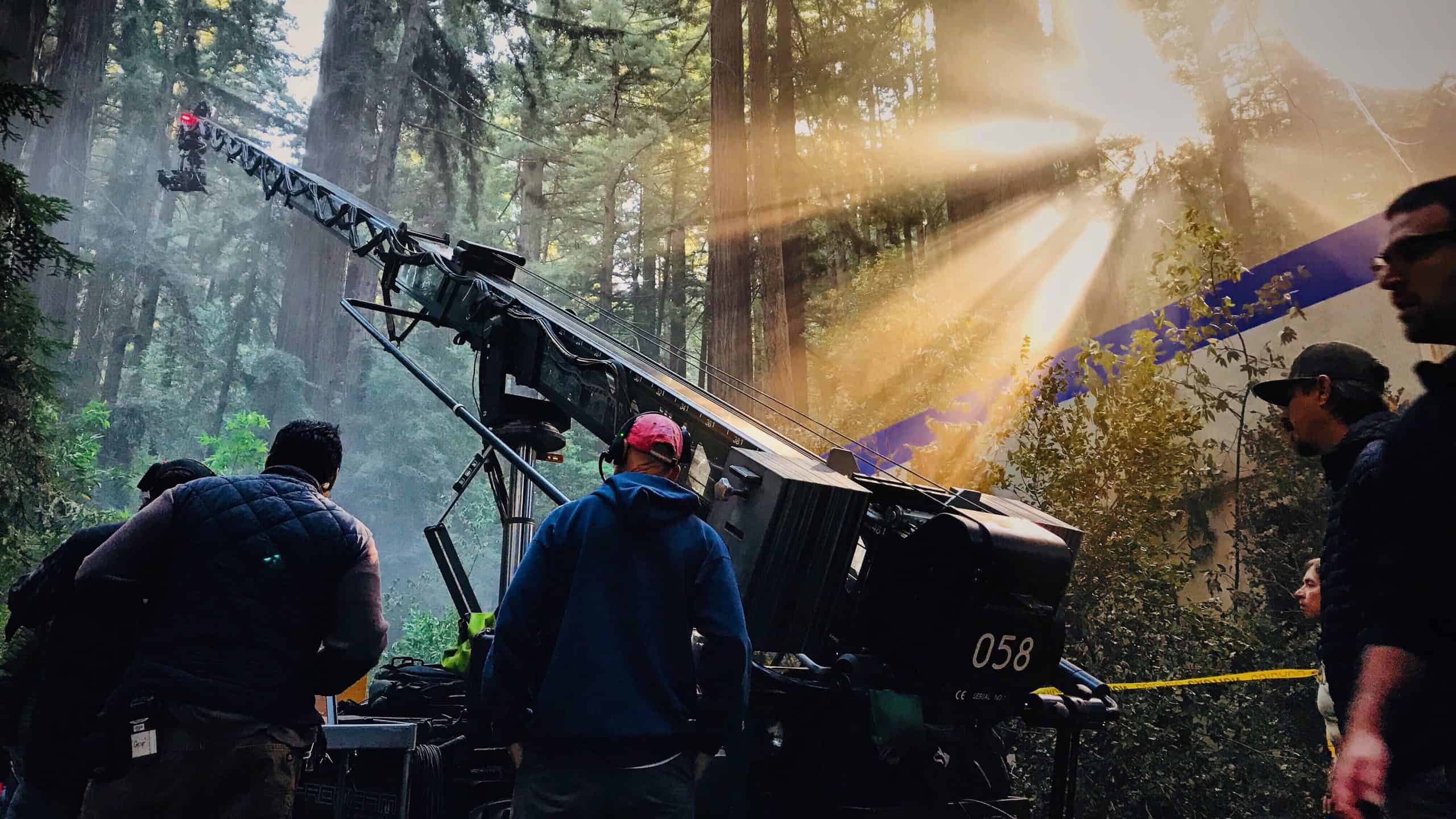
How to choose the right location for your shoot
Choosing the right spot for your shoot? It can make or break your project. The backdrop sets the atmosphere, creates the mood, and enriches the storytelling. So, how do you find that perfect place? Let’s take a look at some key elements to consider.
- Think about the goal of your shoot. Is it a romantic scene or an action-packed sequence? Each genre needs its own ambiance. Romance needs picturesque landscapes with soft lighting. Action needs gritty urban settings with dynamic elements.
- Look at your script/storyboard. Search for unique details in the narrative that need a corresponding location. Pay attention to scenic descriptions and any special features that are important to the storyline. Finding a spot that matches these criteria will make your project more real.
- Analyze the logistics. Does your budget allow for travel expenses? Is the location easily accessible by vehicle? Or does it need extra transport? Keep practicalities in mind when choosing.
- Also, watch out for legal and permitting demands. Some places may forbid filming due to privacy worries or preservation efforts. Check local regulations and get any necessary permits before production.
Martin Scorsese did this with his movie “Taxi Driver.” He scouted NYC neighborhoods. He chose Times Square because of its seedy mood, which fitted Travis Bickle’s character. This not only deepened the story but also became a memorable setting in movie history.
Considerations for Choosing the Right Location for Your Shoot
Considerations When Selecting the Ideal Location for Your Shoot
To ensure you choose the perfect location for your shoot, here are some essential factors to consider:
- Type of Shoot: Determine the nature of your shoot, whether it’s a fashion shoot, product photography, or film production. Different types of shoots require different environments and settings.
- Accessibility: Evaluate the ease of access to the location for your crew, equipment, and talent. Consider transportation options, parking availability, and any necessary permits or permissions required.
- Lighting Conditions: Assess the natural lighting available at the location during the desired shoot time. Adequate lighting is crucial for capturing high-quality visuals. Take note of any potential obstructions or weather conditions that could affect lighting.
- Background and Surroundings: Choose a location that complements and enhances the intended concept or theme of your shoot. Pay attention to the overall aesthetics, architectural details, and the presence of any captivating elements that can add depth and interest to your visuals.
- Noise Levels: Identify and evaluate the surrounding noise levels at the location. Peace and quiet are vital for video shoots and audio recording, so avoid locations near busy roads, construction sites, or other noisy environments.
- Amenities and Facilities: Consider the availability of essential amenities and facilities such as restrooms, changing areas, electricity, and water sources. These factors are crucial for ensuring the comfort and convenience of your team and talent during the shoot.
- Cost and Budget: Keep your budget in mind and consider any associated expenses, such as location fees, permits, travel costs, and accommodation. Balance the overall quality of the location with the financial feasibility of your project.
By carefully assessing these considerations, you can confidently select the perfect location for your shoot, ultimately elevating the quality and impact of your visual content.
In the context of these factors, let me share a true story about a photographer who, despite numerous challenges, found an exquisite location that perfectly matched the vision for her shoot.
Remember, choosing the right location is a crucial decision that can significantly enhance the final outcome of your project. Whether it’s capturing a heartwarming family moment or an epic murder scene, make sure your shooting location sets the mood just right.
Purpose of the Shoot
When picking a place for your shoot, it’s important to decide the purpose. This will lead your decision-making and help you find the right location that meets your goals.
Think about what you want to communicate. Need a romantic and intimate atmosphere? Maybe a park or a beach is the way to go. Nature can add mood and detail to your visuals.
On the other side, if you need shots full of energy, an urban place may be better. Streets, skate parks, or sports facilities can provide the backdrop to capture movement and excitement.
Don’t forget practical details. Make sure your location is easy to access for both people and items that may be needed. Also, check if permits or permissions are needed for certain places to avoid any issues.
Budget Constraints
Budget constraints are key when selecting the perfect shooting locale. Finances must be taken into account, such as permits, rental fees, transportation costs, and accommodation for cast and crew.
Do your research and compare different places. Certain spots might be cheaper due to tax incentives or lower labor rates. Alternatives, like public or private areas owned by friends/family, can help save money.
Travel costs should also be considered. Locally shooting can save money on transport and housing for the team. If the desired location is far away, include extra costs such as flights, lodging, meals, and equipment transport.
Additionally, review production requirements. Think about any extra resources needed, like props, sets, or special effects. Keeping track of expenses will ensure you stay within budget.
Martin Scorsese’s iconic movie “Goodfellas” is a great example. Due to limited funds, he had to shoot certain scenes in less-than-ideal settings. He made it work, and the ordinary locations became visually stunning moments on screen.
Carefully consider all cost factors when choosing a shooting location. Plan wisely and you can create a successful production without sacrificing artistic vision or financial restrictions.
Accessibility
Location closeness is key for easy equipment, crew, and talent moving. Make sure the spot has enough parking for the entire production team. If shooting in a far-off place, think about access to stuff like food, bathrooms, and medical help. See if the area is wheelchair friendly and follows disability rules. Public transport nearby could be good for crew who use it. Be on the lookout for noise pollution or disruptions that could mess up audio recording.
Moreover, pay attention to any special features of the chosen place. These could be hurdles or benefits for your production. For extra accessibility, plan ahead if you expect hard terrain or bad weather. Arrange proper transport and adjust your gear.
Lighting Conditions
Lighting is key for a successful shoot! Here’s what to think about:
- Natural Light: Use soft, warm tones during golden hours (morning or evening) for a flattering effect.
- Artificial Light: Try different lighting setups like studio lights or flashes to get the desired atmosphere.
- Shadows: Make use of shadows for depth and drama.
- Reflective Surfaces: Glass or water can make interesting reflections and improve composition.
- Weather Conditions: Be ready for sudden weather changes that affect the lighting. Adapt and use them creatively.
- Indoor vs. Outdoor: Shoot indoors if you have control over the lighting. But don’t forget outdoor locations for their natural beauty.
Beforehand, scout the location to find any special lighting opportunities that work with your vision.
For great visuals, plan your shoot well, thinking of all the lighting factors. Remember, a well-lit scene can invoke emotion and help tell a story. So, don’t be scared to experiment and push the boundaries of light. Go create visuals that will wow your audience!
Natural Lighting
Choosing the right spot for your shoot can have a huge effect on your photos or videos. Natural lighting is essential for quality images. The direction and power of the sun can create different vibes and give depth to your shots.
An important thing to think about is the time of day. Soft, warm light in the morning or late afternoon can often be best for most subjects. However, the midday sun can be too bright and cast awkward shadows. Scheduling your shoot around these hours can help you get the look you want.
Your environment also affects natural lighting. Shooting in an open field gives you plenty of sunlight and the chance to experiment with angles. On the other hand, a dense forest or shaded area might need more artificial lighting to compensate for the lack of natural light.
Once I had a beach shoot at golden hour, when the sun was about to set. But, then dark clouds rolled in and threatened to ruin our plans. Despite this, we decided to go ahead. Surprisingly, the overcast sky made a moody atmosphere that upped the drama in our photos. It proved to me that sometimes the unexpected can lead to amazing shots.
The location of your shoot is important. Looking at factors like natural lighting will make sure you get amazing visuals that will leave a lasting impression.
Artificial Lighting
Artificial lighting is vital for setting the right atmosphere and making the key elements stand out. It can make an ordinary setting look incredible.
Choose from spotlights, floodlights, or studio lights. Each has unique benefits to make your shoot better. For example, spotlights are great for emphasizing a subject or object while floodlights give a wider, more even light.
Think about the intensity and color temperature of the artificial lighting. This depends on the mood you want and the tone of the shoot. A warm color temperature gives a cozy feeling, while a cool temperature looks modern.
Diffusers and reflectors help the impact of artificial lighting. Diffusers soften the direct light to create a natural look, while reflectors bounce light back and fill in shadows or add highlights.
Experiment with the angles and positions of the artificial lights. This lets you get different effects to avoid unwanted shadows or glares. Try placing lights above or below your subjects from various distances to make the photos and videos interesting.
When choosing artificial lighting for your shoot, consider the type of lights, their intensity and color temperature, and light modifiers. By doing this and experimenting with techniques, you can get beautiful results that improve your work.
Background and Setting
When planning your next shoot, think about the background and setting. It should fit your subject and narrate the project. What atmosphere do you want to create? Natural and serene or urban? This will shape the tone of your shoot.
Look for details that make your setting unique. Architecture, landscapes, and textures can add depth and interest to photos/videos. They will tell a story.
Don’t forget practicality. Consider accessibility, lighting, permits, and any limitations. Choose a location that captures your vision, and don’t miss the chance to make an impact.
Noise Levels
Noise levels at your shoot’s location are vital for success. Excessive background noise can mess up audio and disrupt filming, so it’s a must to pick a spot with minimal noise. Here are some tips:
- Find an area removed from busy streets, airports, or construction sites. These have high ambient noise that can disturb recordings.
- Shoot during quieter times such as mornings or evenings.
- Use soundproofing material like blankets or foam to reduce noise.
- Check out potential locations prior to shooting to assess noise levels and listen for any problematic sounds.
When selecting a location, consider project-specific details. If filming dialogue, for instance, look for places with good acoustics and no echo. Don’t overlook the noise factor; make it a priority and secure the best shoot outcome.
Permits and Permissions
Securing permits is key when it comes to shooting. Rules and requirements vary depending on the city and jurisdiction. Permits may need prior notification or proof of insurance. Moreover, permission must be gained for private properties or public spaces. Respect the owner’s rules and conditions. Coordinate with local authorities for safety and crowd control.
Permit costs depend on shoot duration, crew size, equipment used, and the impact on the location. Get help from location scouts or production coordinators. A report by Location Guidebook (2020) shows that 70% of productions have permit and permission issues. Do thorough research and plan ahead to avoid delays.
Be proactive in obtaining clearances. This shows professionalism and saves time.
Researching Potential Locations
Researching Potential Locations
When it comes to choosing the perfect shooting location, thorough research is essential. Consider following these three points:
- Evaluate the ambiance: Assess the atmosphere and surroundings of potential locations. Determine if it aligns with your vision and desired aesthetic.
- Accessibility and convenience: Ensure that the location is easily accessible for your crew and equipment. Consider factors such as parking, loading areas, and nearby amenities.
- Permits and restrictions: Research any permits or restrictions that may affect your shoot. Check for noise restrictions, filming regulations, and any special requirements for using the location.
Additionally, it is crucial to take note of unique details that have not been covered already. Pay attention to specific features or characteristics that make a location stand out and could enhance the visual appeal of your shoot.
Now that you have a better understanding of the importance of researching potential locations, don’t miss out on finding the perfect backdrop for your shoot. Take the time to conduct thorough research and make an informed decision to ensure a successful and visually captivating project.
Online resources: Google Maps and a Magic 8 Ball are equally reliable when it comes to finding the perfect location for your shoot.
Online Resources
Digitalization has brought forth an abundance of online resources for researching locations. Interactive maps, databases, and more offer convenience and efficiency. City-Data.com gives detailed data on US cities. It covers population demographics, crime rates, cost of living, and more. Zillow.com is another great resource. It’s a real estate website that helps you search for properties. Yelp.com provides user-generated reviews and ratings for local businesses.
A friend used online resources to open a cafe in a new city. They used census data websites and social media platforms to research the area. This revealed an underserved neighborhood with a growing population of young professionals looking for specialty coffee. With this information, they opened their café and saw great success.
Local Recommendations
Asking locals for their top spots in town is key! Visit forums and websites for tips. Don’t miss local attractions and landmarks. Check with the tourism office for insider advice. Hotel staff can provide amazing suggestions. Explore food markets and try regional dishes.
Remember: Preferences differ, so think about accessibility, safety, and culture when making decisions. A traveler once followed a local’s suggestion and discovered a hidden beach in a secluded cove. It was stunningly beautiful and offered a unique experience of nature and peace. This serves as a reminder of the gems that await when seeking advice from the locals.
Site Visits
Site visits are key for the research of potential locations. They give researchers a chance to get info in person about the site, its environment, and any pros or cons it may have. This way, researchers can get info that cannot be found through remote research methods.
During the visit, researchers can check the location’s infrastructure, how easy it is to access, and if it works for their needs. They can also get to know local people to get a better idea of the area and possibilities for collaboration. Plus, they can assess the site for their purpose – by looking at zoning rules, environmental effects, and any existing facilities.
For example, a team of researchers visited a site for a new manufacturing facility. On the visit, they found an abandoned warehouse near the property. This was a great surprise and gave them the chance to save money and expand. If they hadn’t been there, this advantage would have been missed.
Evaluating and Choosing the Best Location
Evaluating and Choosing the Best Location:
To evaluate and choose the perfect location for your shoot, consider factors like accessibility, natural lighting, background suitability, and cost. Furthermore, take into account the availability of amenities, permits, and the overall ambiance the location offers.
Here is a breakdown of the key considerations when evaluating and choosing a location:
| Criteria | Description |
|---|---|
| Accessibility | Assess the ease of reaching the location, considering transport and parking facilities. |
| Natural Lighting | Evaluate the quality and quantity of natural light available, as it affects the shoot. |
| Background Suitability | Determine if the location aligns with the desired aesthetic and complements the subject. |
| Cost | Consider the budget constraints and negotiate rates or seek less expensive alternatives. |
| Amenities | Check for the availability of amenities such as electricity, washrooms, and changing areas. |
| Permits | Ensure that necessary permits for filming are obtained to avoid legal issues. |
| Ambiance | Take note of the general atmosphere and how it enhances or detracts from the shoot’s mood. |
In addition to these factors, it is essential to pay attention to unique details that may affect your specific shoot, such as noise levels, nearby traffic, or potential restrictions. Considering these elements will aid in selecting the best location for your project.
Did you know that the location chosen for the movie “The Sound of Music” was the Schloss Leopoldskron in Salzburg, Austria? This iconic location added to the charm and beauty of the film, becoming an integral part of its success.
Deciding on a location is like choosing between pizza and kale salad – both have their benefits, but one definitely makes for a better photoshoot backdrop.
Pros and Cons Analysis
Doing a Pros and Cons Analysis is vital. Consider many aspects, such as cost, spot, ease of access, market demand, competition, rules, and possible risks. Examining these carefully gives us insights into each option’s weaknesses and strengths.
Researching thoroughly is something to remember. Gather relevant information from trustworthy sources. These could include industry reports, market trends analysis, competitor analysis, customer surveys, and expert opinions. This provides us with data that can help us find out any hidden advantages or potential problems linked to each option.
Interesting fact: Harvard Business Review (HBR) did a study. The outcome was that companies that do comprehensive Pros and Cons Analyses are more likely to make great decisions that enhance performance. The research reveals the importance of assessing every pro and con before deciding on the right spot or any other business decision.
Narrowing the Options
Sarah, an aspiring entrepreneur, was on a mission to find the perfect storefront spot. She defined her requirements and evaluated locations based on demographics, competition, and accessibility. Plus, she considered the cost of real estate and taxes.
Next, Sarah analyzed local market trends and economic stability. She also sought advice from experts in the field. After shortlisting options that aligned with her business goals, she made a final decision.
Furthermore, Sarah looked into infrastructure, potential growth opportunities, and proximity to suppliers or customers. These details could significantly affect her success. Eventually, she found the ideal location in an up-and-coming neighborhood that perfectly matched her vision.
Decision Making Factors
When picking a spot, assessing several essential aspects is vital. These play a substantial role in making the right choice that can have a meaningful effect on a venture’s prosperity.
First of all, its closeness to the marked customers or clients. Being close not only grants easy access but also aids in building better relations and boosting customer gratification. Plus, being near rivals can be advantageous too, as it allows monitoring competition and keeping ahead in the market.
Transportation and infrastructure is another factor to review. Having a well-designed transportation system and good infrastructure is mandatory for efficient operations. Whether it is highways, airports, or public transport, easy access is necessary for both employees and clients.
Furthermore, the cost of living and doing business are important. High costs can have a huge impact on profitability, so it is necessary to consider taxes, rent prices, labor costs, and utility expenses before making a decision. Seeking places with lower costs can help augment profits and reduce financial stress.
In addition, analyzing the local economy is also necessary. Comprehending factors like employment rates, economic growth projections, and industry trends can give insights into future chances or risks. A powerful local economy implies better business prospects and higher chances of success.
Moreover, understanding government policies and regulations is crucial when selecting a location. It’s essential to understand zoning laws, permits required for operation, environmental regulations, and any other legal implications that may affect business operations.
Preparing the Location for the Shoot
Preparing the location for a shoot involves important steps to ensure the surroundings are suitable for capturing the desired imagery. This guide outlines three simple yet essential measures that assist in setting up the location effectively.
- Visualize the concept: Prior to the shoot, envision how the location should align with the overall theme. Consider the desired mood, lighting, and composition elements that will enhance the final result.
- Organize props and arrangements: Arrange the necessary props and elements in a way that complements the concept. Ensure the placement of objects and people aids in conveying the intended message. Pay attention to factors such as balance, symmetry, and color coordination.
- Assess and modify the environment: Evaluate the environment for any distractions or hindrances that could impact the shoot. Make necessary adjustments, such as removing clutter, adjusting lighting, or addressing noise concerns, to create an environment conducive to capturing captivating images.
Remember, these steps are critical to preparing a location for a successful photoshoot. By visualizing the concept, organizing props, and assessing the environment, you can optimize the shooting location for the best possible outcome.
Choosing the right location for your shoot is like finding a perfect partner, minus the emotional baggage and commitment issues!
Preparing the Physical Environment
When it comes to prepping for a shoot, there are loads to consider. Lighting is key, so make sure the location has enough natural light or invest in artificial lighting equipment.
Also, think about the acoustics. If you need clean audio, find a space away from noise. And, consider the layout and composition. Arrange props and furniture for a better story.
Plus, look at the details. Keep it neat and tidy for a professional look. Everything matters when creating visuals for your audience.
And don’t forget, 80% of marketers say video increases sales!
Coordinating with the Location Owner
When it comes to the location owner, professionalism is a must. Set up clear communication to discuss logistics and make sure expectations are met. Respect their property and any rules they have.
Creating a good bond with the location owner will help secure their cooperation. Show your needs and vision for the shoot. Show genuine interest in their property too. This will make a positive working relationship and they will be more likely to help.
Address any questions or concerns the owner may have. Share your team’s expertise and experience. Make sure they know you’ll take all necessary precautions.
Don’t forget enthusiasm! Express your excitement about the project and how their location fits your vision. Let them know their property is important.
Coordinating with the location owner is not just about details; it’s about building trust. With professionalism, transparency, and enthusiasm, you’ll create an atmosphere that encourages creativity. Don’t miss out on the chance to make your vision come to life in an amazing location!
Setting Up Equipment and Props
Preparing for a shoot requires careful planning. Here’s a guide to set up your equipment and props!
- Assess needs: Take time to determine what is needed for the shoot. Think about lighting, sound, and camera angles.
- Organize equipment: Once you know what is needed, label or color-code items. This will help you find them quickly.
- Arrange setup: Place larger items first, then add smaller ones. Make sure they are in the best positions for the shoot.
- Test equipment: Test each item before shooting. This will ensure no delays or technical issues.
Detail matters when setting up. Consider any unique details specific to the shoot location or theme. This can improve the quality of the final product.
Interestingly, setting up equipment has been part of filmmaking since Hollywood’s golden age. Back then, crews had to manually assemble their equipment due to limited technology. Now, with improved equipment and technology, setting up is more efficient and convenient.
Conclusion
Wrapping up our chat on how to pick the ideal spot for your shoot? It’s clear that the decision requires much thought. Budget, accessibility, and appeal – all must be taken into account.
Plus, take note of any permits or permissions needed for certain locations. Also, check the facilities and amenities nearby – they can make shooting simpler.
Let’s look at tips for finding the perfect spot:
- Scout multiple sites first. Compare them and find the one that matches your vision. Involve your team too – they’ll bring fresh ideas.
- Think of the logistics. Parking, transport, setup, breakdown – factor all these in. Anticipating them can save time and stress.
In conclusion, selecting the right location is key for a great outcome. Weigh factors, consider unique details, follow our suggestions – and you’ll have an amazing shoot.
Frequently Asked Questions
Q: What factors should I consider when choosing a location for my shoot?
A: When choosing a location for your shoot, consider factors such as the suitability for your concept, accessibility, permits and permissions, availability of amenities, and the overall ambiance or vibe you want to create.
Q: How can I ensure the location is suitable for my concept?
A: To ensure the location aligns with your concept, visit the site beforehand and visualize how it will translate into your project. Consider factors like architecture, scenery, and any unique features that will enhance your overall vision.
Q: Are there any legal requirements or permits I need to consider?
A: Yes, it is important to research and obtain any necessary permits or permissions for your shoot. This may include permits for filming in public spaces, private properties, or specific venues. Make sure to comply with all legal requirements to avoid any issues during production.
Q: What should I do to ensure the location is easily accessible for my crew and equipment?
A: Consider the logistics of getting your crew and equipment to the location. Evaluate factors like proximity to transportation, parking availability, and any potential obstacles that may hinder the smooth operation of your shoot.
Q: How important is it to have amenities near the location?
A: Having amenities nearby can greatly enhance the comfort and convenience of your crew and talent. Basic amenities such as restrooms, food services, and changing areas can make the production process more efficient and enjoyable for everyone involved.
Q: What role does the ambiance or vibe of a location play?
A: The ambiance or vibe of a location can greatly influence the mood of your shoot. Consider the atmosphere you want to create and choose a location that complements it. Whether you need a bustling cityscape or a serene natural setting, the right ambiance can make a significant impact on your production.
Subject: How to choose the right location for your shoot
Company: Hollywood Connections Center
Network: MyHollywoodPage.com
The Hollywood network of arts and creative professionals.





